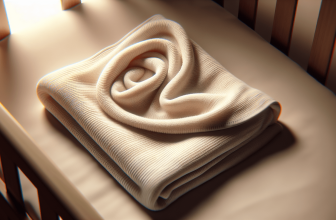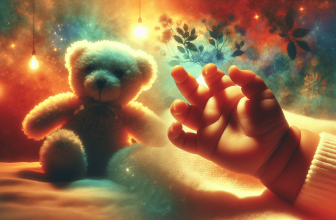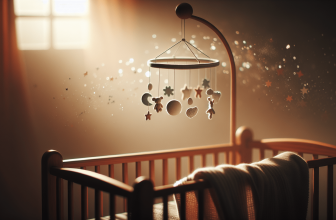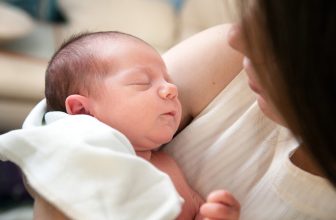Are you a new parent or caregiver looking for tips on how to care for your baby’s delicate hair? Look no further! In this article, we will share a few gentle baby hair care tips that will help you keep your little one’s hair clean, healthy, and stylish. From the right way to wash their hair to some easy and adorable styling ideas, we’ve got you covered. So, grab your comb and let’s dive into the world of gentle baby hair care!
This image is property of images.unsplash.com.
Choosing the Right Products
When it comes to taking care of your baby’s precious hair, choosing the right products is essential. You want to ensure that you are using gentle and safe products that won’t irritate their delicate scalp or cause any harm. One of the first things to consider is using a mild baby shampoo. Baby shampoos are specifically formulated to be gentle on your little one’s scalp and hair, without any harsh ingredients that may cause irritation.
In addition to opting for a mild baby shampoo, it’s also a good idea to choose organic or natural hair products. These products are often free from harmful chemicals, sulfates, and parabens that are commonly found in regular hair care products. Choosing organic or natural products can be beneficial in maintaining the health and well-being of your baby’s hair.
Lastly, it’s important to avoid products with harsh chemicals or fragrances. Harsh chemicals can be drying to your baby’s scalp and may cause irritation or discomfort. Fragrances, although they may smell pleasant, can also be an irritant to your baby’s sensitive scalp. So, when you are shopping for baby hair care products, make sure to check the ingredient list and opt for unscented or naturally scented products.
Washing Your Baby’s Hair
Bathing your baby can be a fun and bonding experience, and washing their hair is no exception. Here are some tips on how to properly wash your baby’s hair:
Before you begin, make sure to prepare the bathing area. Ensure that you have everything you need within reach, such as a soft towel, shampoo, and a gentle brush or comb. Safety is always a priority, so it’s vital not to leave your baby unattended while washing their hair.
Start by wetting your baby’s hair with warm water. The water should be comfortably warm, not too hot or cold. Use a cup or your hand to gently pour water over their head, keeping their eyes and face protected. Wetting the hair will help to remove any dirt or debris that may have accumulated.
Next, apply a small amount of baby shampoo to your hand and lather it up. Be sure to choose a shampoo that is specifically formulated for babies to avoid any unnecessary irritation. Gently massage the shampoo into your baby’s scalp using circular motions with your fingertips. This will help to cleanse their scalp and remove any excess oils or build-up.
After massaging their scalp, thoroughly rinse their hair with warm water. Make sure to remove all traces of shampoo, as any residue left behind can cause the scalp to become dry or itchy. Continue pouring water gently over their head until you are confident that all the shampoo has been rinsed away.
Once you have completed rinsing, use a soft towel to pat their hair dry. Avoid rubbing their hair vigorously, as this can cause unnecessary friction and potentially damage their delicate strands. Instead, pat their hair gently to remove excess moisture.
Frequency of Hair Wash
The frequency of washing your baby’s hair can vary depending on their age and individual needs. Newborns generally do not require frequent hair washing, as their hair tends to be fine and doesn’t produce as much oil. You can start by washing their hair once or twice a week, depending on their level of dirt or oiliness.
As your baby grows older, you can gradually increase the frequency of hair washing. You may find that they start to produce more oil and their hair becomes dirtier more quickly. However, finding the right balance is essential, as washing their hair too frequently can dry out their scalp and strip away the natural oils that keep their hair healthy.
Pay attention to your baby’s hair and scalp condition. If you notice any signs of excessive dryness or irritation, try reducing the frequency of washes and opt for a more gentle approach. On the other hand, if their hair becomes noticeably dirty or greasy, you can consider washing it more often but still ensuring you are using gentle products.
Maintaining a balance between cleanliness and not drying out the scalp will help keep your baby’s hair healthy and comfortable.
Dealing with Cradle Cap
Cradle cap is a common scalp condition that can affect infants, typically within the first few months of life. It appears as yellowish or brownish flakes on the scalp, sometimes accompanied by mild redness or itchiness. While it is not a serious condition, it can be unsightly and cause some discomfort for your little one.
To deal with cradle cap, there are a few gentle approaches you can take. Firstly, you can use a gentle brush or comb specifically designed for babies to help loosen and remove the flakes. Gently brushing in a circular motion can help lift the scales without causing any additional irritation to the scalp.
Another approach is to apply natural oils to the scalp. You can use coconut oil, olive oil, or baby oil to moisturize the affected areas. Apply a small amount of oil to the scalp, and gently massage it in using your fingertips. Let the oil sit for a few minutes to soften the flakes, then comb through the hair again to remove the loosened scales.
If you have any concerns about your baby’s cradle cap or if it persists despite your efforts, it’s always a good idea to consult with a pediatrician. They can provide further guidance and recommend any additional treatments if necessary.
This image is property of images.unsplash.com.
Detangling Baby Hair
Babies’ hair can be prone to tangles, especially as it grows longer and thicker. To detangle your baby’s hair without causing any discomfort, here are some tips to follow.
Start by using a wide-toothed comb specifically designed for babies. This will help to gently work through any knots or tangles without pulling or damaging the hair. Begin at the ends of the hair and slowly work your way upward, being patient and gentle.
If you encounter any stubborn tangles, don’t force or pull at them. Instead, consider using a detangling spray or conditioner. These products are designed to make the hair smoother and more manageable, making it easier to untangle without causing any breakage or discomfort.
Remember to take your time and be gentle when detangling your baby’s hair. Their hair is still delicate and fragile, so exercising patience and care is crucial to avoid any unnecessary damage.
Avoiding Hair Damage
Taking steps to avoid hair damage is essential for maintaining the health and integrity of your baby’s hair. Here are some tips to keep in mind:
Firstly, avoid tight hairstyles or using elastics that can pull and strain the hair. Opt for loose hairstyles that allow the hair to move freely and avoid putting unnecessary pressure on the scalp.
When it comes to hair accessories, choose soft, fabric-based options. Avoid using accessories with metal parts or sharp edges that could potentially snag or pull on the hair.
Additionally, it’s important to minimize the use of excessive heat from hair dryers or styling tools. Babies’ hair is delicate, and exposing it to high heat can lead to dryness and damage. Whenever possible, allow their hair to air dry naturally or use the lowest heat settings on hair dryers if needed.
By following these tips, you can help protect your baby’s hair from damage and maintain its overall health and appearance.
This image is property of images.unsplash.com.
Styling Tips for Baby Hair
Styling your baby’s hair can be a fun and creative way to express their individuality and personality. Here are some styling tips to keep in mind:
First and foremost, keep it simple and natural. Embrace the natural texture and movements of your baby’s hair. Avoid using excessive products or complicated styles that may cause discomfort or be difficult to maintain.
Consider using baby-friendly hair accessories that are cute, soft, and comfortable. Opt for options like stretchy headbands, soft fabric bows, or gentle clips. These accessories can add a touch of style without compromising on comfort.
If your baby’s hair is long enough, you can experiment with gentle hairstyles like ponytails or braids. These styles can help keep the hair out of their face and prevent tangles, while also offering a cute and practical look.
Remember to always prioritize your baby’s comfort when styling their hair. Keep hairstyles loose and avoid pulling or straining the hair. If your baby shows any signs of discomfort, adjust the hairstyle or remove any accessories.
Maintaining Healthy Baby Hair
To maintain healthy baby hair, there are a few key practices you can incorporate into your routine:
Regularly trim the hair to prevent split ends. Trimming allows for healthier hair growth and removes any damaged or split ends. It’s best to use baby-safe scissors or visit a professional who specializes in cutting children’s hair.
Keep the scalp clean and moisturized. Gently cleanse the scalp during bath time, ensuring that you remove any excess oil or product build-up. Follow up with a moisturizer or natural oil to keep the scalp hydrated and prevent dryness.
Protect the hair from harsh weather conditions. Just like adults, babies’ hair can be affected by extreme weather conditions. Use appropriate headgear such as a hat or bonnet to shield their hair from the sun or cold temperatures.
By incorporating these practices into your baby’s hair care routine, you can help maintain healthy and beautiful hair.
This image is property of images.unsplash.com.
Seeking Professional Advice
If you have any specific concerns or questions about your baby’s hair, it’s always a good idea to consult with a pediatric hair specialist. They have expertise in dealing with children’s hair and can provide valuable advice tailored to your baby’s unique needs.
A pediatric hair specialist can assess the condition of your baby’s hair, offer recommendations for specific concerns, and provide guidance on how to manage any persistent or unusual hair issues. Seeking professional advice can give you peace of mind and ensure that you are taking the best possible care of your baby’s hair.
Enjoying the Baby Hair Journey
Taking care of your baby’s hair is not only about maintaining its health but also about enjoying the journey together. Embrace the uniqueness of your baby’s hair and celebrate its individual texture, color, and style.
Have fun experimenting with different hairstyles and accessories. From cute pigtails to tiny top knots, there are endless possibilities to explore. Use this time to create positive hair care experiences for your baby, fostering a sense of well-being and self-confidence from an early age.
Remember, as your baby grows and develops, their hair will change too. Be open to embracing these changes and adapt your hair care routine accordingly. Enjoy the journey of discovering your baby’s evolving hair and continue to provide the love and care it deserves.
Taking care of your baby’s hair is more than just a routine, it’s a special opportunity to bond and nurture. So, cherish these moments, and let your baby’s hair shine with health and happiness.
This image is property of images.unsplash.com.













